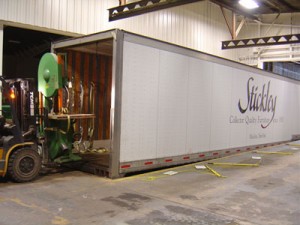 Woodworkers who choose self-employment often begin working in a woodshop. But if demand for their work grows, they eventually need to upgrade their machines and move to a larger workspace. If this describes your situation, there are some critical tips to consider as you go about expanding your woodshop, six of which we list below.
Woodworkers who choose self-employment often begin working in a woodshop. But if demand for their work grows, they eventually need to upgrade their machines and move to a larger workspace. If this describes your situation, there are some critical tips to consider as you go about expanding your woodshop, six of which we list below.
Find a New Workspace before Buying New Machinery
When meeting increased product demand requires higher capacity machinery, some woodworkers get new machines before they find a workspace that can house them. Putting large, industrial machines in a woodshop has three disadvantages: it makes the woodshop crowded, it’s extremely noisy, and it adds to the cost of moving to a new workspace, which will eventually happen.
Find a Workspace with Adequate Space for Further Expansion
When upgrading to a larger workspace, it’s ideal to choose one that offers more expansion room than you currently need. Don’t buy an 80,000 square foot warehouse if you presently need 10,000 square feet. But do purchase 10% more space than you currently need. If your company is growing, make sure it has room to grow comfortably.
Consider Buying Used Machines Instead of New Ones
If you’re upgrading from light commercial machinery to industrial machinery, machinery could be the biggest expense of your expansion. However, buying used woodworking machines instead of new ones can reduce the expense. Unlike light commercial machinery, industrial woodworking machinery can perform like new for years to come when properly operated and maintained.
Take Steps to Ensure Machine Quality
If you decide to buy used machines, ensuring their quality is a must. Four steps for ensuring the quality of used woodworking machinery are: (1) buying from a professional seller of used woodworking machinery, (2) investigating a seller’s reputation at the Better Business Bureau (BBB), (3) reviewing a machine’s official maintenance record, and (4) inspecting the machine first hand, or having an expert third party inspect it.
Consider Implementing an Industrial Dust Removal System
In woodshops, woodworking machines are usually outfitted with individual dust collection units. But larger facilities make it sensible to implement a central dust collection system that connects to each machine, removing wood dust to a large receptacle located on a facility’s exterior. In addition to simplifying the dust collection process, a central collection system also eliminates the cost of maintaining individual collection units.
Avoid Understaffing
Woodworkers who expand their operations are always wary of overstaffing; a concern that sometimes leads to understaffing. While understaffing saves money, it also poses a problem: workers operating machinery for woodworking that is outside of their training and expertise. A good hiring practice is to determine the types of expertise you need, and then hire as many workers as necessary to meet your needs.




